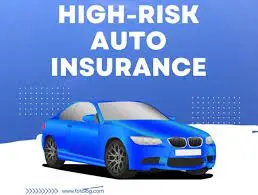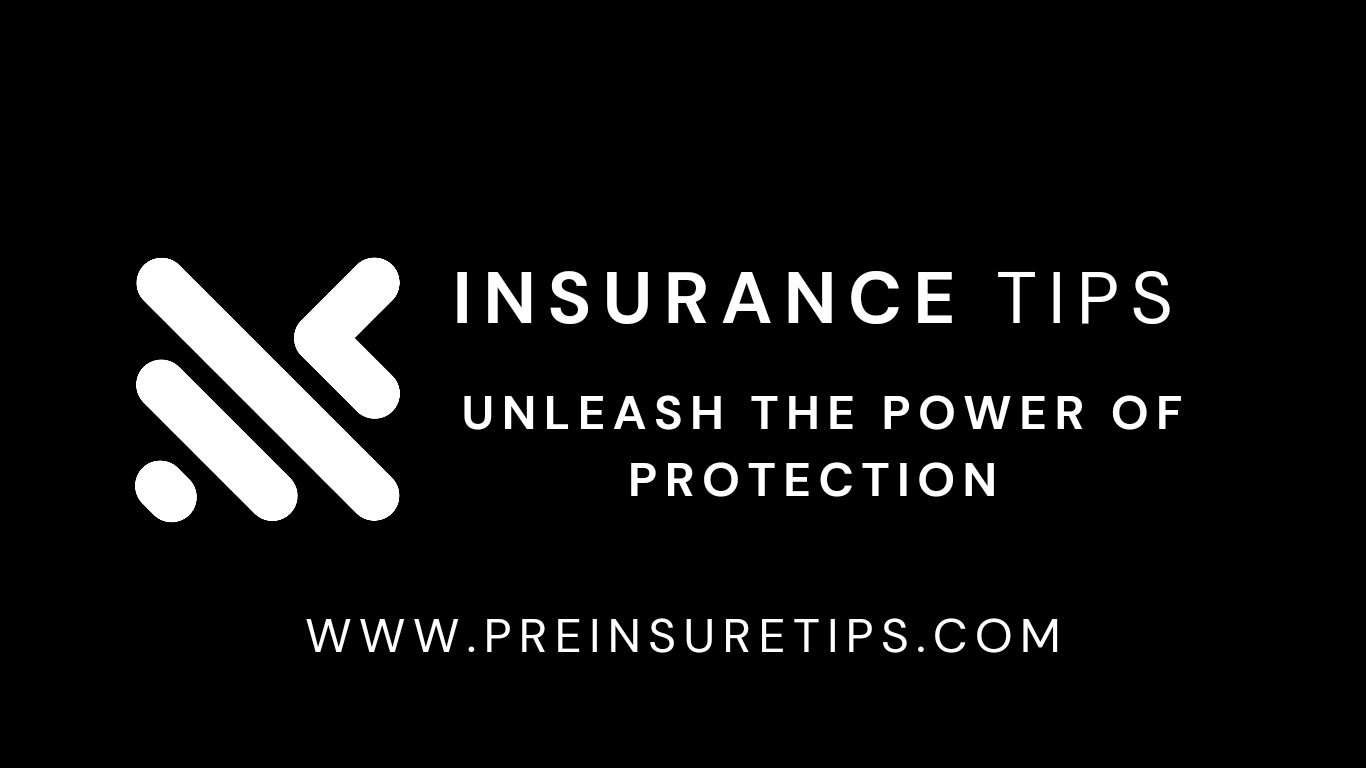
Car insurance is a fundamental aspect of responsible driving, but for those labeled as high-risk drivers, obtaining affordable and adequate coverage can feel like an uphill battle. In this comprehensive guide, we’ll delve into the intricacies of car insurance for high-risk drivers, shedding light on the factors that lead to high-risk status and the steps one can take to navigate this challenging terrain. Whether you’re a newly categorized high-risk driver or someone looking to better understand this aspect of the insurance industry, this article is your roadmap to securing the right coverage
Identifying High-Risk Drivers
Before we dive into the nuances of high-risk auto insurance, it’s crucial to understand who falls into this category and why. High-risk drivers are individuals considered more likely to be involved in accidents or file claims. Identifying high-risk drivers involves examining various factors, including their driving history, age, and the types of vehicles they operate.
III. Factors Contributing to High-Risk Status
Traffic Violations and Convictions
High-risk drivers often accumulate a laundry list of traffic violations and convictions. These include speeding tickets, which indicate a disregard for speed limits, reckless driving, a behavior that endangers others on the road, and the most severe of all, DUI/DWI offenses, which are criminal charges related to impaired driving.
Accident History
The frequency and severity of accidents are primary indicators of high-risk status. Insurance companies scrutinize a driver’s accident history, considering both the number of accidents and the extent of damage involved.
Inexperience and Age
Teenage drivers and novice drivers are more likely to be classified as high-risk due to their limited experience behind the wheel. Insurance providers view them as a greater liability, given their propensity for errors and lack of driving history.
Vehicle-Related Factors
Some vehicles inherently pose higher risks, such as sports cars and high-performance vehicles. Additionally, cars reported as stolen or involved in criminal activities can lead to high-risk designations.
Understanding High-Risk Auto Insurance
High-risk auto insurance, often referred to as non-standard insurance, is a specialized insurance category designed to cater to the unique needs of high-risk drivers. It’s essential to grasp the core elements of this type of coverage to navigate the complexities effectively.
Definition and Purpose
High-risk auto insurance exists to provide coverage to drivers who may not be eligible for standard insurance due to their higher likelihood of filing claims. It ensures that even high-risk drivers have access to necessary protection while on the road.
State Requirements for High-Risk Drivers
Understanding your state’s specific requirements for high-risk drivers is crucial. Some states have mandatory insurance programs or higher minimum coverage limits for those with a high-risk designation.
Premiums for High-Risk Drivers
How Rates are Determined
High-risk drivers face higher insurance premiums due to their increased likelihood of accidents or claims. Insurance companies calculate these rates based on various factors, including driving history and location.
Impact of High-Risk Designation
The label of being a high-risk driver can significantly impact your insurance rates, making it essential to understand how this designation can affect your financial obligations.
Coverage Options for High-Risk Drivers
High-risk auto insurance provides a range of coverage options tailored to the needs of drivers in this category. Understanding these options is crucial to ensuring you have the right protection in place.
Liability Coverage
Liability coverage is typically the minimum requirement for all drivers. It covers the costs associated with injuries and property damage you may cause to others in an accident.
Comprehensive and Collision Coverage
These coverage types extend beyond liability, providing protection for your vehicle in various scenarios, including accidents, theft, or natural disasters
Uninsured/Underinsured Motorist Coverage
High-risk drivers often face a higher likelihood of encountering uninsured or underinsured motorists. This coverage ensures that you’re protected in such situations.
Finding Suitable Insurance for High-Risk Drivers
Locating appropriate insurance as a high-risk driver may seem daunting, but various avenues can lead you to the right coverage. Let’s explore your options.
Traditional Insurance Companies
Traditional insurers, despite their stringent underwriting standards, may still provide coverage to high-risk drivers. It’s crucial to understand how they evaluate high-risk applicants and weigh the pros and cons of this route.
Non-Standard Insurance Companies
Non-standard insurers specialize in providing coverage to high-risk drivers. Discover the advantages of working with these specialized providers, including tailored policies and higher acceptance rates.
State-Assigned Risk Pools
In some cases, high-risk drivers can access insurance through state-assigned risk pools. We’ll explore what these pools are, who qualifies, and how to gain access to them.
Steps to Improve High-Risk Status
While high-risk status can be a significant roadblock, it’s not a permanent label. Taking proactive steps to improve your driving record can help you transition to standard insurance and enjoy lower premiums.
Defensive Driving Courses
Defensive driving courses offer numerous benefits, from enhancing your skills behind the wheel to potentially earning certification discounts. We’ll delve into the advantages of enrolling in these courses.
Traffic School and Point Reduction
Traffic school isn’t just for novice drivers. Discover how attending traffic school can reduce the points on your driving record and subsequently lower your insurance rates.
Maintaining a Clean Driving Record
Avoiding additional violations is crucial for high-risk drivers. We’ll discuss the long-term effects of a clean driving record and how it can lead to more affordable insurance rates.
Comparison Shopping for High-Risk Car Insurance
One of the keys to securing the right high-risk auto insurance is diligent comparison shopping. We’ll walk you through the process of gathering quotes, analyzing coverage, and customizing your policy to meet your needs.
Gathering Multiple Quotes
We’ll explore the various methods for obtaining multiple insurance quotes, from using online tools to contacting insurance agents directly.
Analyzing Coverage and Costs
Understanding policy limits, deductibles, and out-of-pocket expenses is vital when analyzing the coverage and costs of high-risk auto insurance.
Customizing Your Coverage
High-risk drivers have unique needs, and customizing your coverage ensures that you strike the right balance between cost and protection.
Special Considerations for High-Risk Drivers
High-risk drivers may encounter specific situations that demand special attention and consideration. Explore these essential aspects of high-risk auto insurance.
SR-22 Insurance Requirements
SR-22 insurance is a unique requirement for some high-risk drivers. We’ll delve into what SR-22 is, its purpose, and the steps involved in obtaining and maintaining it.
Non-Owner Insurance for High-Risk Drivers
Non-owner insurance provides coverage for individuals who do not own a vehicle but still require insurance. We’ll examine who needs non-owner insurance and the benefits it offers.
Consequences of Driving Without Insurance
The consequences of driving without insurance are severe, and high-risk drivers are not exempt from them. Learn about the legal and financial penalties and the potential for uncovered costs in the event of an accident.
Legal and Financial Penalties
Driving without insurance can lead to hefty fines, legal action, and other financial penalties. We’ll explore the consequences specific to different states.
Potential for Uncovered Costs
Without
insurance, high-risk drivers can find themselves personally liable for medical expenses and property damage in an accident. Understand the risks associated with driving without coverage.
Managing High-Risk Status Over Time
For high-risk drivers, improving their status and moving toward more affordable insurance options is an achievable goal. Discover how continual monitoring of your driving habits and reassessment of your insurance options can lead to positive changes.
Continual Monitoring of Driving Habits
Recognizing and addressing risk factors in your driving habits is a crucial step in the journey toward better insurance rates.
Reassessment of Insurance Options
Car Insurance for High-Risk Drivers As your driving record improves, you may become eligible for standard insurance with lower premiums. We’ll explore the process of graduating to standard insurance and seeking more affordable coverage.
Conclusion
In conclusion, car insurance for high-risk drivers is a multifaceted topic that demands attention to detail and a proactive approach. By understanding the factors that contribute to high-risk status, the nuances of high-risk auto insurance, and the steps to improve one’s status over time, high-risk drivers can secure the coverage they need to protect themselves and others on the road. Remember that responsible driving is not only a legal requirement but also a pathway to more affordable insurance rates, ensuring that you can navigate the complex terrain of high-risk driver insurance with confidence and success.
